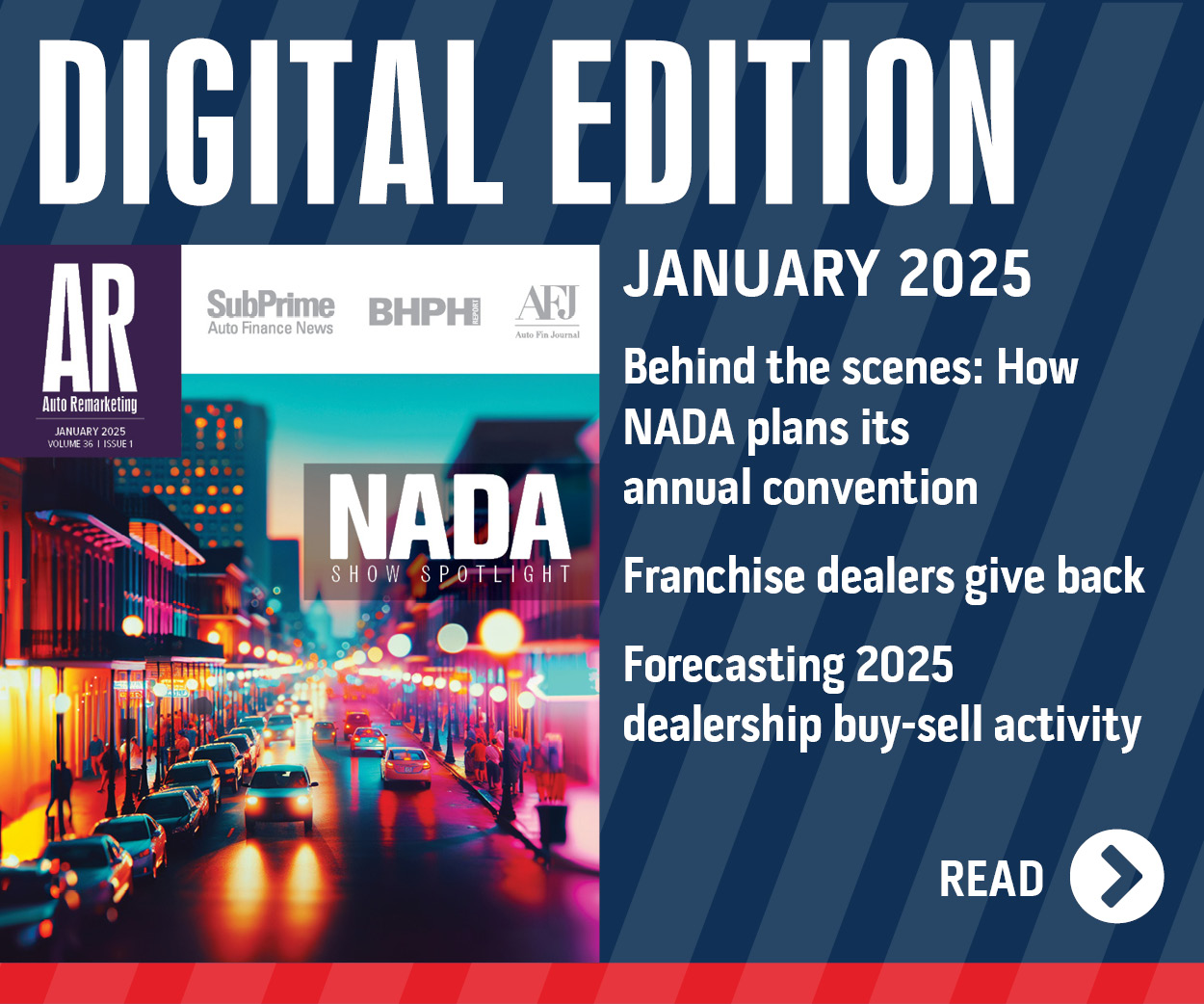Webb Discusses Why Lease Penetration Approaching 30 Percent Benefits Industry

Manheim chief economist Tom Webb first cited data from J.D. Power that indicated more than 3 million new-vehicle leases will be written this year, thanks to a penetration rate well above 25 percent.
With those numbers in mind, Webb contends those levels can — and should — move even higher, resulting in healthy returns for the used-vehicle industry.
“The shift in the new-vehicle market has been increasing skewed toward higher-income households,” Webb said during his quarterly conference call on Monday. “That is a trend which will continue. I believe these people like to trade on a short cycle and therefore leasing is the preferred product for them.
“As a matter of fact, I strongly believe there more people today in a very long retail contract that would have been better off in a lease than people who are in a lease and should have been in a retail contract,” he added.
Earlier last month, Experian Automotive reported that of all new vehicles financed in Q2, leases accounted for an all-time high of 27.64 percent during the timeframe, up from 24.4 percent in Q2 of 2012.
According to the latest State of the Automotive Finance Market report from Experian, the average monthly payment for a lease contract written in the second quarter came in at $408 for 35 months.
With attractive lease offers and consumer demand, Auto Remarketing asked Webb whether leasing penetration could approach 30 percent or even higher.
“In terms of where that lease penetration rate can go, I wouldn’t put any particular limit on it. It easily could go up another couple of percentage points higher without being done poorly,” Webb said.
So how can more new metal leave franchised lots attached to leases?
Webb pointed to store personnel that might be a little rusty at explaining the benefits of leasing because of how the market dried up during the worst of recent recession four years ago.
“Even at today’s lease penetration rate, you have to take into consideration the fact that it probably would be higher if more salespeople were selling a lease and F&I managers were more accustomed to the product, because there are a lot of dealerships that went through that big lack of availability of anyone to do leasing where the salesperson and the F&I manager became unaccustomed to selling a lease product,” Webb said.
“Again, I truly believe a lot of the new-vehicle buyers today are increasing skewed to high income households,” he continued. “They’re the ones who are able to satisfy their pent-up demand. It’s become a market for the much more well-to-do. These are people who want to trade on a three- or four-year cycle.
“If a person really wants to trade on a three- or four-year cycle, I think the salesperson is doing them a disservice by putting them into a 72- or 84-month loan.”
Webb pointed to one specific factor that could derail lease origination from climbing.
“What could upset it all if the lessors start to see some residual losses,” Webb said. “Once those losses start to come in, they can snowball quite a bit and that would cause them to pull back from originations.”
Editor’s Note: More from Webb’s latest conference call is coming in Wednesday's edition of Auto Remarketing Today as the Manheim economist discussed how remarketers are preparing to handle increases off-lease volume in 2014 and beyond.
Nick Zulovich can be reached at nzulovich@autoremarketing.com. Continue the conversation with Auto Remarketing on both LinkedIn and Twitter.

 View The Latest Edition
View The Latest Edition

